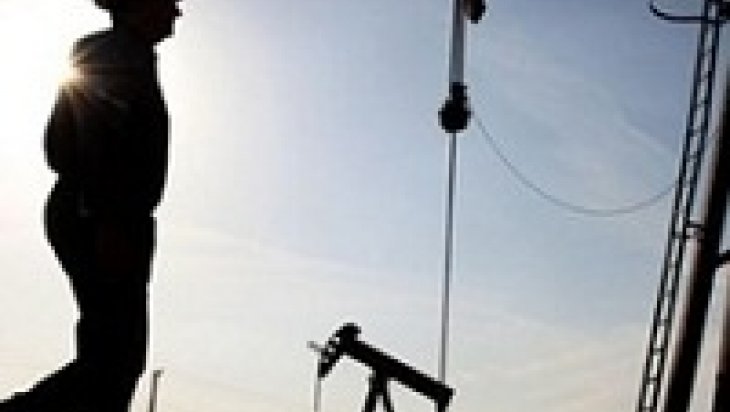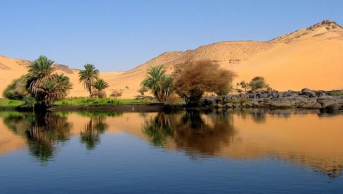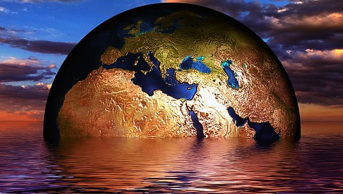An Analysis of Low Oil Prices’ Impact on Water in the Middle East: ’Virtually' impossible Water for the Gulf Countries?

Virtual water is a greatly illuminating concept for understanding the water-food nexus. In its orig-inal formulation, according to J.A. Allan, the virtual water is “the water needed to produce agri-cultural commodities.” As a corollary, the concept can be expanded to include non-agricultural commodities as well. This broader view includes, for instance, the water used for producing industrial goods such as machines, cars, pencils, cell phones. It should be noted that it is the first view -the water needed for food- that virtual water is basically about. Allan underlined that 1,000 cubic meters of water is required to produce a ton of grain, and if this much grain is “con-veyed to a political economy short of freshwater and/or soil water, then that economy is spared the economic, and more importantly, the political stress of mobilizing about 1,000 cubic meters of water.” Thus, virtual water bridges water with food and trade. This basic formulation, i.e. im-porting food in order to overcome the obstacles that water scarcity has caused in food produc-tion, has become one of the viable alternatives for water-scarce countries, most of which lie in the Middle East and North Africa. It is advocated for countries with limited water resources to buy food from abroad instead of trying to grow their own food. Through this way, these countries would be able to utilize their valuable water for drinking and industrial purposes.
Rising food prices in the second half of the 1990s, following the establishment of the World Trade Organization, have showed the limits of the virtual water for many Middle East countries which have limited financial power to afford new prices. These countries then intensified their efforts towards more traditional methods of trying to augment their water supplies so they would have been able to produce their own food. Plus, for many countries, producing their own food is a very important dimension of reaching the so-called “food security”. According to such view, food security can best be realized via produving one’s own food, not buying it from elsewhere. Therefore, many countries did not find importing food very attractive. This is not to say that these countries stopped food imports. Indeed, the amount of virtual water imported by Middle East and North Africa region increased incessantly. One of the reasons was that people were simply consuming more calories per capita then they did decades ago. Also, population growth and climate change related impacts are creating additional pressures for countries to import food, or virtual water.
A country such as Syria, for instance, as a relatively well-watered country in the region (when compared to its neighbors in the south, namely Jordan and Israel), has become a food importer in 2008 after nearly two decades of self-sufficiency. This was mainly because of an unfortunate combination of a prolonged drought, and fast and unstoppable population growth. In six decades between 1950 and 2010, the population of Syria increased sevenfold, from 3 million to 23 million.
Middle East is not homogenous. While financially poorer nations find hard to pay the price of virtual water, prosperous ones, particularly the oil-rich countries of the region -which also have very little freshwater resources in general- see it as almost a natural way out of water scarcity. For most of these countries, along with desalination, virtual water imports are the two basic for-mulas to provide water and food for people and economy.
Three major exceptions are Saudi Arabia, Libya and Iran which have significant sources of wa-ter other than desalination and virtual water trade. These are groundwater resources in cases of Libya and Saudi Arabia, and flowing rivers in case of Iran. It is important to note that, all these countries of exception as well are importing great amounts of virtual water. They only have some other sources of water that many Gulf countries do not have.
Oil-rich countries of the Middle East are also not immune to global economic fluctuations. Falling oil prices in the last year or so have turned into a nighmare scenario for these countries in relation to many aspects of their economy, including trade in food, that is to say, virtual water. A rough estimation is that oil producing countries have lost some 1 trillion USD due to 40 dollars per barrel oil. It is even the case that several countries (e.g. Qatar and United Arab Emirates) have considerably increased the price of water services, production of which is dependent on intensive energy use. Evaporation of funds due to low oil prices in 2015-2016 have probably been the greatest plight that Gulf countries have witnessed in decades. And it will take years for the budgetary crises in these countries to subside.
To conclude, low oil prices mean basically two things for most of the Middle East: more expen-sive food, and more expensive water per se. Trade in virtual water will continue to be a signifi-cant mechanism for many Middle East countries, but single-sided economies will likely continue to pay a higher price for commodities that they used to take low prices for granted for so long.









